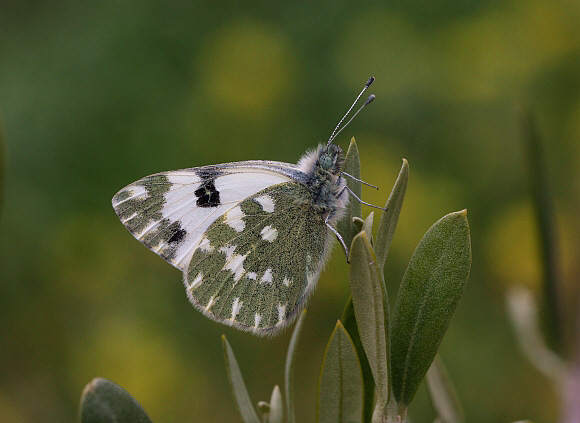 Pontia daplidice, Dudar, Granada, Andalucia, Spain – Peter Bruce-Jones
Pontia daplidice, Dudar, Granada, Andalucia, Spain – Peter Bruce-Jones
Introduction
The taxonomy of the genus Pontia is contentious with some authorities considering there to be as many as 10 species, while others regard edusa and chloridice to be subspecies of daplidice or mere synonyms of that species. Further confusion arises because the Peak White Synchloe callidice is also included in Pontia by many workers.
Pontia is represented in all continents except North America and Australasia. The most widespread and abundant species is daplidice. It occurs in Morocco, Algeria, Tunisia, the Canary Islands and over most of Europe. If edusa and chloridice are included within the definition of daplidice the range is greatly extended and also covers Ethiopia, Iran, northern India and most of temperate Asia. The butterfly is also recorded as a rare vagrant in southern Britain.
Habitats
Pontia daplidice inhabits open hot and often barren areas where its larval foodplant flourishes. It is most abundant at low altitudes in Europe, but has been found as high as 2700m in north Africa.
Lifecycle
The most widely used larval foodplant is Reseda ( Resedaceae ) but Sisymbrium, Erysimum, Arabis, Ptilotrichum, Moricandia, Alysum, Sinapis, Iberis, Diplotaxis, Descurainia, Lepidium, Thlaspi, Fibigia and Raphanus ( Brassicaceae ) are also used. The eggs are usually laid singly on the underside of leaves but the larvae feed on the flowers and developing seedpods.
Adult behaviour
The butterflies are only active in hot sunshine when they nectar avidly at a wide range of flowers
